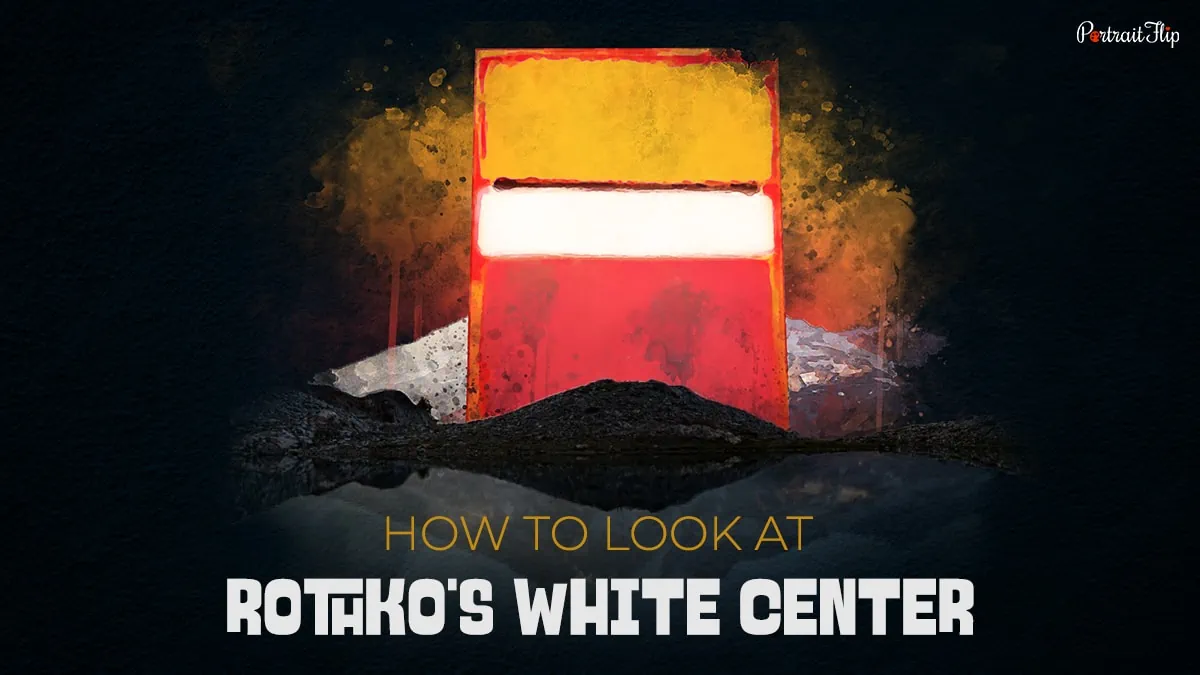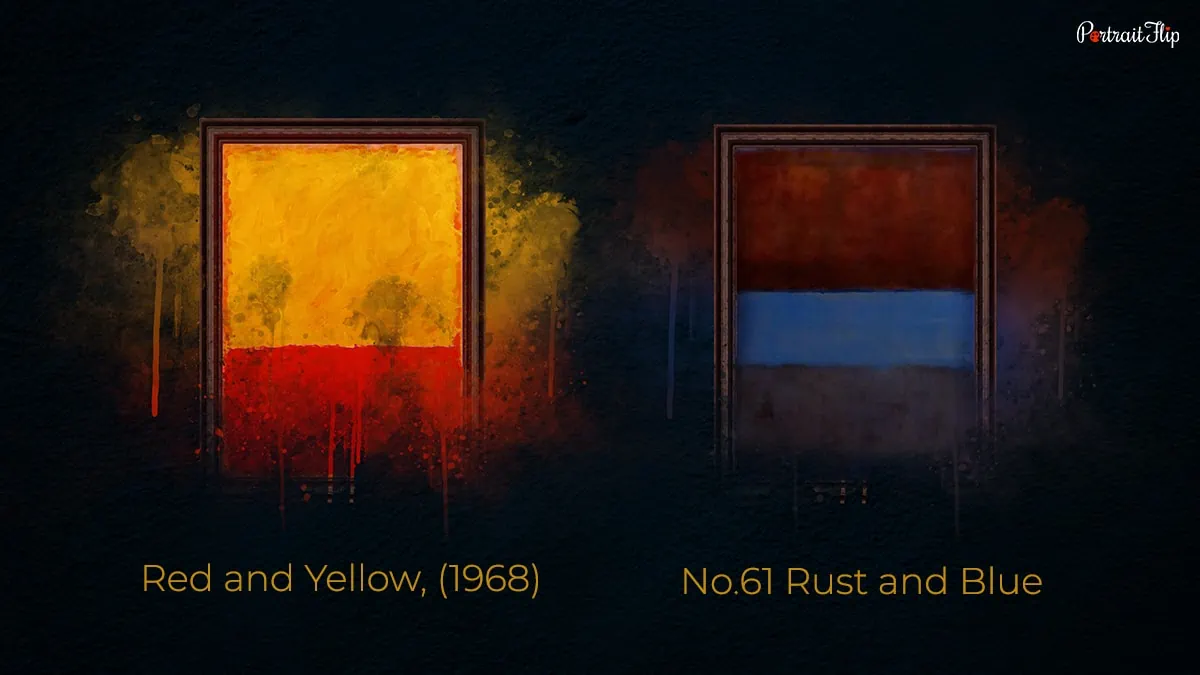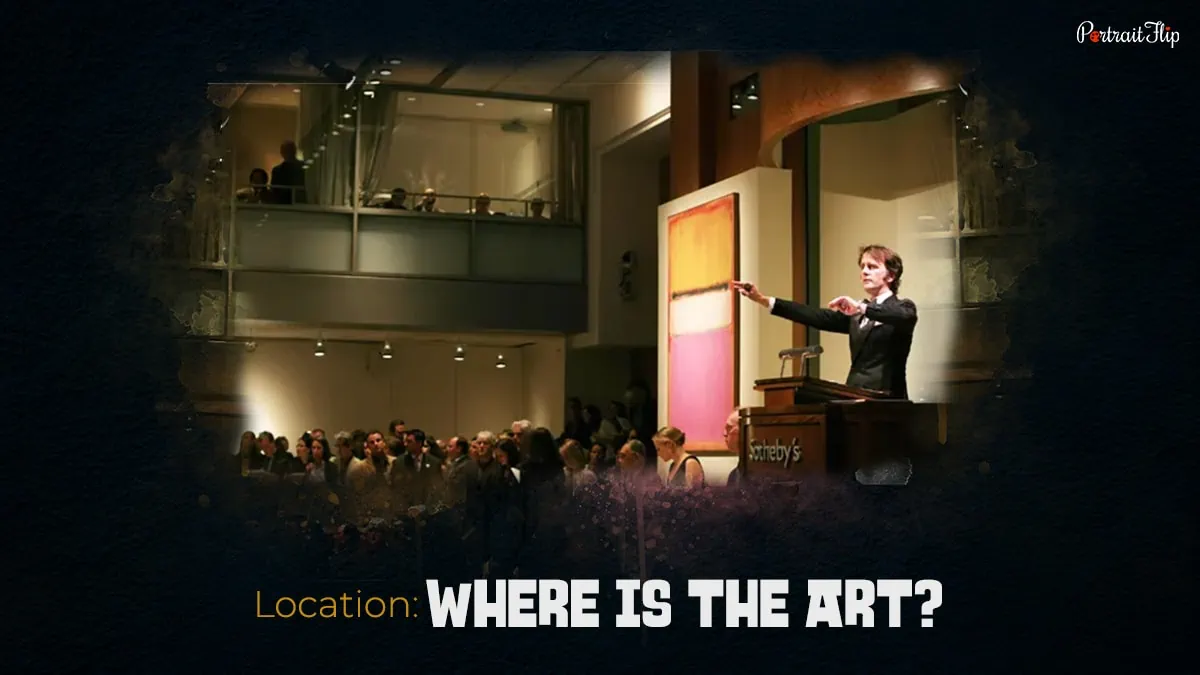What if you enter a gallery and the painting you are witnessing doesn’t have any backstory to share?
A painting that is just a painting.
Maybe it was created to be just looked at and not have a deeper meaning or history.
Feeling weird after thinking about an artwork that doesn’t have an explanation to give?
Don’t be, because the artist doesn’t want his viewers to have any thoughts when they face the painting.
Instead, he wants to acquire his admirer’s reaction, or, you can say, the emotions of people.
I know you must be wondering who this strange artist is. Who else if not Rothko!
Mark Rothko is a famous abstract artist whose paintings are as different as his thoughts.
The way he describes his art and portrays it in front of the audience is incredible.
Well, his way of thinking led me to do research about his famous painting, White Center, and to learn more about his uncanny logic.
You can say that as a writer, I couldn’t help but search for the meaning that lies behind Rothko’s White Center.
Read to know whether I succeed in revealing the veracity of the painting or it is just an artwork to be looked at!
Table of contents
Artist Mark Rothko

To know Mark Rothko’s thoughts, we first need to learn who he was.
A colorfield painter who knew four different languages with a well-educated background. Wow!
We already know about the art of abstraction he uses while painting his piece. Apart from that, do you know why he only painted with colors?
No, he wasn’t experimenting like Kandinsky’s Color Study: Squares with Concentric Circles.
As an abstract painter, he always forms patterns that can trigger people’s emotions.
His motives were always to express basic human feelings like tragedy, euphoria, doom, and more.
He was clear with his intentions while producing art, which gave us a masterpiece like the White Center painting.
So what exactly is Rothko’s White Center?
Analysis of White Center Painting

The analysis could be common in your eyes about Rothko’s White Center. A painting with three to four layers in different colors, right?
But it’s more than what you see.
White Center, or Yellow, Pink, and Lavender on Rose (1950), is a color field painting that expresses one’s own sentiments.
I already told you about his thoughts while creating a particular artwork, which included a study of basic human feelings.
Rothko’s White Center is a reflection of his fascination with emotional and visual power.
If you observe the paintings by Mark Rothko, there is a certain pattern that is repeated in shape and size, so why the White Center painting behind it?
White Center was also based on the same pattern as his other paintings.
Rothko’s White Center has another definition as well, which is geometry.
This pink and white artwork is divided into three geometric segments of yellow, white, and lavender, separated by a thin black line.
The form used by Rotho in White Center art is not regulative but gives out a medium of emotion to the audience’s eye.
Although he made his paintings in the most minimalist form, they still had a lot to express.
I can surely say that his subconscious mind was working at its peak.
His White Center is free from symbols that make it stand out in the crowd. Aren’t you captivated by the thoughts of Rothko behind his every masterpiece?
People always wonder how they should exactly admire Rothko’s masterpieces. Well, I thought, why not cover this topic and remove all the doubts from the viewer’s mind?
How to Look at Rothko’s White Center

Imagine that you are standing in front of Mark Rothko’s White Center painting.
Imagine that what you are witnessing is not a great work of art but just a combination of a few colors.
Now imagine that a strange force is pulling you towards those shades. What does that make you feel? Doesn’t it give you the sense of falling into something really deep?
That’s how you should look at Rothko’s White Center. You know why?
It’s because Rothko didn’t think that any meaning or explanation was necessary in order to understand his artwork.
He believed that to get any form of art, there shouldn’t be any obstacles between the painting and the viewers, or a person shouldn’t require any specific knowledge.
He always wanted his audience to connect directly with their emotions and the way they felt at that exact moment.
But of course, not everyone will get the painting in the same manner.
Some are deeply moved by Rothko’s White Center, whereas others are in search of meaning behind the rectangular art. Some may have tears in their eyes, or some may feel nothing at all.
You know what makes me wonder while explaining this, that how something so simple could become one of the most famous paintings, or how something painted so effortlessly can be intense.
But actually, it’s the simplicity of Rothko’s White Center that makes it so captivating, leaving people to find the answers behind it.
It’s the ambiguity that draws the attention of the viewers and makes them stare at the White Center art for the longest time.
It’s natural to know the purpose of the things that are produced or the solid answers that contribute to their existence.
But Rothko’s artwork is completely opposite of what people want. They don’t have any meaning or subject that speaks to the story of the painting.
A painting that pulls out the emotions in people’s lives—well, I want one. But how?
Click the link below to own Rothko’s White Center with its beautiful abstract meaning.
The Decoration: A ColorField Art

Everyone wants to know what techniques were involved when Rothko started his White Center painting.
Let me tell you that he was just specific about the shape, which is rectangular, and the colors he used.
It’s true that these two factors made his paintings known on a larger scale.
Rothko mixed his paints and prepared a canvas that showed old master techniques.
He felt that he was making a kind of pure art where the audience experiences the art directly with a combination of simple colors placed on a single canvas.
Rothko was true to what he was painting. He knew what would make the viewers feel and trigger their emotions at the same time.
The way colors mix in harmony gives off profound cosmic, mythological, and religious symbolism.
When you look at the painting, I am sure that it doesn’t give you dark feelings. You know why, because of the colors presented.
The shades (pink, yellow, and white) are placed in such a way that they give off a sense of hope and positivity.
Some also believe that these three colors represent the time periods, just like Rothko’s No. 61.
For example, yellow speaks for sunset, white is for day, pink and lavender on rose are for dawn, and the black thin line represents night.
However, Rothko never confirmed this interpretation, but the fact that a single painting has the capability to hold numerous meanings just by adding a few colors is amazing.
This famous abstract painting has a uniform style where the artist plays in the field of colors.
Why is White Center so Expensive?
Rothko’s White Center (Yellow, Pink, and Lavender on Rose) set a record for the most expensive painting in 2007 when it was sold at an auction.
At Sotheby’s auction, this famous pink painting was acquired by a royal family for 73 million dollars.
Now the question of why Rothko’s White Center is so expensive can be contributed by two answers:
First, it was brought into existence in 1950 when Mark came up with his corporate identity, which eventually glorified the painting and made it recognizable among all the famous painters.
Secondly, do you know how big Rothko’s White Center is? It is one of the largest paintings, measuring 205.8 by 141 cm.
This also gives the pink and white artwork fame and makes it count among the most expensive paintings.
Location: Where is the Art?

Where is Rothko’s White Center located? Where can I find Rothko’s White Center? Which place holds Rothko’s White Center? And so on.
Everyone just wants to know where White Center by Rothko is.
So let me unravel the mystery that the White Center painting by Mark Rothko is in a private collection of Sheikh Hamad bin Khalifa Al-Thani and his wife, Mozah bint Nasser Al Missned.
Due to its deep meaning that is not-so-descriptive in a way, it is unique and appealing in the audience’s eyes.
A painting that has the potential to reveal more than one definitions and that is different for each human. Amazing work, Mr. Rothko!
Lastly, do you want to hear some unusual facts about Rothko’s painting?
You can easily identify that what you are witnessing is Rothko by just having a glimpse at his work.
The colors, the patterns, and the abstract expressionism make it obvious to point out his art.
But this abstract artist has a new interest in his books, where he steps out of his comfort zone and produces a painting that depicts humans and other elements.
Yes, it’s true! Entrance to Subway, a painting that belongs to one of his subway series, is art that shows real human figures, although they are faceless.
Rothko and his thoughts are just unpredictable!
Hi Readers
I hope you find the blog interesting and full of facts.
I have tried to gather all the information in one place to make your reading easy and fluent.
But I am sure that there must be some suggestions to give and questions to ask, right?
Leave your valuable feedback and queries in the comments section. It will be amazing to hear different thoughts about the painting.
Before you go, I have a surprise for you.
So far, I am sure that you love reading about the arts. Let me introduce you to our art and aesthetics section, which is flooded with interesting content about the famous arts around the world.
I’ll be back with another piece of writing soon. Until then, keep reading and exploring!
FAQs
Rothko’s White Center painting worth 72.84 million dollars.
The White Center painting reflects Rothko’s fascination with human emotions and visual power that is cause after witnessing his paintings.
Mark Rothko use complementary color scheme in his artworks.





